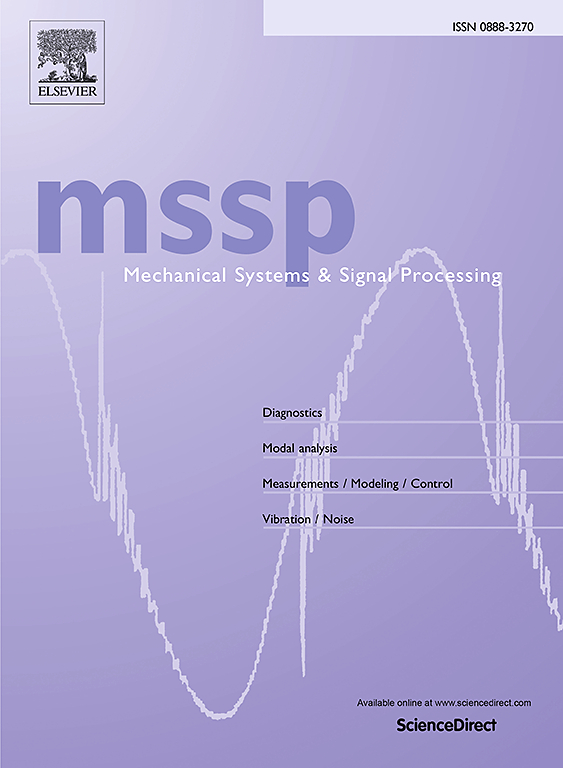Advancements and frequency domain error analysis for state-input estimation in virtual points via the augmented Kalman filter
IF 7.9
1区 工程技术
Q1 ENGINEERING, MECHANICAL
引用次数: 0
Abstract
In this paper, we investigate the usage of the augmented Kalman filter to solve inverse problems by exploiting modal state-space models to characterize forces in a virtual point. Modular engineering approaches require precise interface force characterization, which is challenging to obtain in operation due to the inaccessibility of the interface. However, forces transmitting through connecting components play a crucial role in sound & vibration engineering as well as in lifetime analysis and control. In this work, we compare the estimation of forces transmitting through a rubber mount by using two different strategies that rely on the use of the Virtual Point Transformation (VPT) method. In the first strategy, the forces of interest are determined by applying VPT to transform the estimated set of applied forces. Conversely, in the second methodology, the forces of interest are directly estimated by exploiting input-reduced models defined using the VPT method. This strategy requires the use of an augmented state-space representation of input-reduced models, which is derived in this article. Moreover, a novel approach to determine state-space models reduced into virtual points is proposed, leading to the computation of lower-order models compared to the ones computed with the state-of-the-art technique. The frequency-dependent estimation error of the Augmented Kalman Filter (AKF) scheme, stemming from modelling errors, is derived in a general sense for the cases where displacement and acceleration measurements are exploited. It is shown that the VPT introduces a frequency-dependent error term that biases the estimation obtained with the input-reduced model. This theoretical frequency-dependent error is illustrated in a numerical example, and the results obtained using unreduced and input-reduced models are compared and analysed. Subsequently, an experimental example is analysed, focusing on an industrial rubber bushing. The excitation effects of the forces applied in this component are reconstructed at pre-defined virtual points in both time and frequency domains. Good input estimates are obtained for all kinds of excitation in the time and frequency domains. However, it is found that the results obtained with the input-reduced model are less accurate due to the frequency-dependent error stemming from the VPT, which validates the performed theoretical analysis on the frequency-dependent estimation error of the AKF.
求助全文
约1分钟内获得全文
求助全文
来源期刊

Mechanical Systems and Signal Processing
工程技术-工程:机械
CiteScore
14.80
自引率
13.10%
发文量
1183
审稿时长
5.4 months
期刊介绍:
Journal Name: Mechanical Systems and Signal Processing (MSSP)
Interdisciplinary Focus:
Mechanical, Aerospace, and Civil Engineering
Purpose:Reporting scientific advancements of the highest quality
Arising from new techniques in sensing, instrumentation, signal processing, modelling, and control of dynamic systems
 求助内容:
求助内容: 应助结果提醒方式:
应助结果提醒方式:


